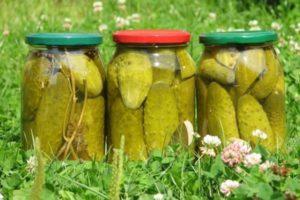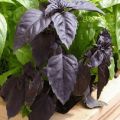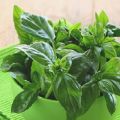TOP 10 recipes for how to properly prepare basil for the winter at home
Among the many spicy plants, basil occupies a special place, and in literal translation the name of the plant is translated as "royal smell". Depending on the variety of garden culture, the content of essential oils and phytoncides, appearance, intensity of taste and aroma may differ. Growing greens is not so difficult, but in order to preserve valuable properties, you should know about the features and rules for preparing basil for storage for the winter.
Basil varieties. Which variety to choose
The main difference between all basil varieties lies in the color of the plant, its height and its taste. Today, there are over 150 varieties of culture. In addition to its culinary uses as a condiment, basil greens are often used as a medicine that has anti-inflammatory and analgesic effects.
According to the degree of color of the grass, it is customary to distinguish a green look and a purple one, they served as the basis for further selection. The plant has been known for more than 2,500 years and is considered to be its homeland in Iran and India. The plant was brought to Europe in the 16th century, and in our country it began to be used only in the 18th century.
Green basil views are distinguished by sweetness and delicate aroma. Their color can be of various gamuts, ranging from light to saturated dark green. Some of the most famous varieties include:
- Genoese - has a pronounced aniseed smell, it is considered a mandatory ingredient for making pesto sauce;
- Evenol - from large leaves emanates the smell of lemon, pepper and clove aroma, is often used for soups and marinades;
- Broadleaf - due to the aroma of pepper and due to the content of essential oils, it gives a special taste to salads, is often used in marinades.
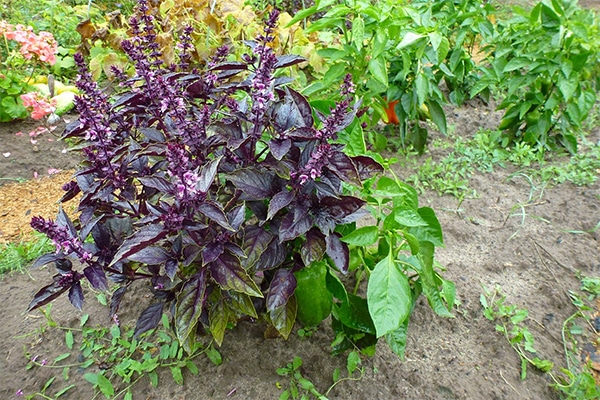
Purple varieties have a pungent taste and smell, and they contain 2 times more oils compared to green varieties. Basil is ideal for salads, soups, meat and fish, and sauces, but it is never used with mushrooms. Due to its rich color, purple basil is often used for decorating flower beds.
In terms of taste, the variety of plant varieties is amazing. Basil representatives can have the following shades:
- clove;
- pepper;
- citric;
- mint and menthol;
- vanilla and a number of others.
According to the growth criterion, it is customary to distinguish undersized, medium and tall varieties.The height of the bushes, depending on the characteristics, can vary from 30 centimeters to 85 centimeters. They may differ in terms of the yield of green mass.
Regardless of the variety, when grown in Russian regions, the plant gains the largest amount of essential oils in the spring, during the period of active growth of greenery.
Preparing the main ingredient
The collection of basil is carried out in the form of separate leaves or twigs. This must be done carefully, avoiding trauma to the roots. Fresh leaves are used for freezing, they are plucked raw until flowering. For recipes that involve chopping, the picking method is not critical and twigs can be used. To obtain good quality blanks, it is important to exclude the ingress of rotten and defective greenery.
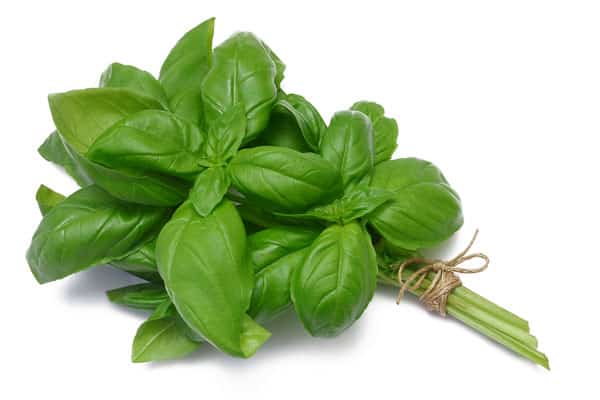
The collected basil is washed under warm running water and spread on a dry towel to evaporate moisture. It is required to sort out the raw materials, remove excess debris, foreign objects, rough stems and leaves with obvious signs of damage.
Drying basil for the winter
Harvesting basil using the drying method is quite simple, and there is no need to use special tools for this. The advantage of the method is the maximum preservation of the healing properties and taste, while the aroma of dry seasoning in its properties is slightly inferior to freshly cut herbs.
In home drying conditions, it is often required to process raw materials as quickly as possible, therefore, an oven or electrical household appliances are preferred to natural drying. Regardless of the method chosen, it is important to know about the basic rules of the process.
Naturally
Drying in a natural way allows you to preserve the aroma of the plant and the maximum amount of nutrients. This can be done in two ways:
- drying greens on a flat surface;
- preliminary collection of plants in bunches and hanging.
The first option is more often used in cases when a seasoning is made for culinary purposes. Its essence lies in the fact that pre-prepared greens are laid out on a flat surface and dried in the natural conditions of the room.
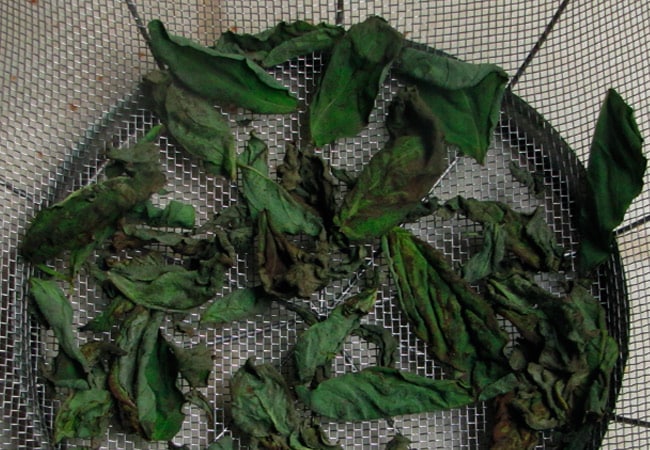
The second option is used to obtain medicinal raw materials or to obtain an ingredient for cosmetics. It involves the formation of bundles from branches by tying them at the base, for their further hanging in the room. It is recommended to form them from 6-7 pcs. The ideal place for this drying method is the attic.
It is important that there is good air circulation in the drying area and no direct sunlight.
Excessive moisture will cause the grass to smell like moldy hay; excess light may cause the product to darken. If there is insufficient ventilation, the greens will begin to rot and deteriorate, it will be impossible to get high-quality material. Periodically, the process should be monitored, in order to exclude decay of raw materials and uniform drying, it is required to periodically turn the raw materials.
In the oven
Drying in the oven must be done carefully, as you can easily dry out the grass. The advantage of this method is its speed, but the usefulness of the final product, in comparison with natural drying, is less. The process looks like this:
- the sheet is removed from the oven;
- the stove is heated to 40 C;
- spread the leaves on a baking sheet in a thin layer;
- greens are placed on a leaf in the oven, the door is left ajar;
- basil is kept for 1 hour, periodically the product is stirred;
- the oven is turned off, the herbs are left in the oven with the door open overnight.
The readiness of the dry basil and the degree of its drying are checked by touch and visually. Properly prepared basil crumbles easily and lends itself to grinding.
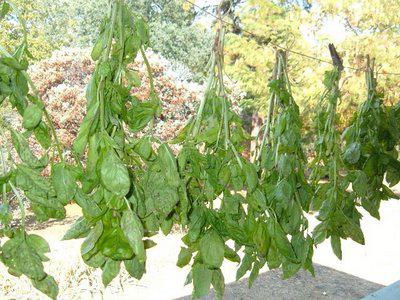
In an electric dryer
It is recommended to process leaves in an electric dryer, since, in the presence of twigs, it is often not possible to achieve uniform drying. After processing, the following manipulations are carried out:
- the leaves are placed on a pallet;
- form an even small layer;
- provide a temperature regime of 40 C.
During the process, the degree of drying of greens in an electric dryer is controlled. Some people use the microwave to get dry seasoning, turning the technique on at full power for a few minutes. The average time for obtaining the finished ingredient at 700 W mode will be 3 minutes.
Freezing
Freezing allows you to preserve a large volume of basil, while requiring a minimum of time. There are many ways, so you can use any of them.
Fresh herbs are frozen mainly for later use in teas or as a cosmetic product. The blanched method and mashed potatoes are often used to prepare raw materials for use in culinary purposes, in the preparation of first and second courses.
Fresh leaves
The simplest method is to freeze fresh herbs, the disadvantage is the need to provide storage space in the freezer. The process is organized using ordinary plastic or special bags for freezing, often using the method of forming "tubes" or ordinary plastic containers.
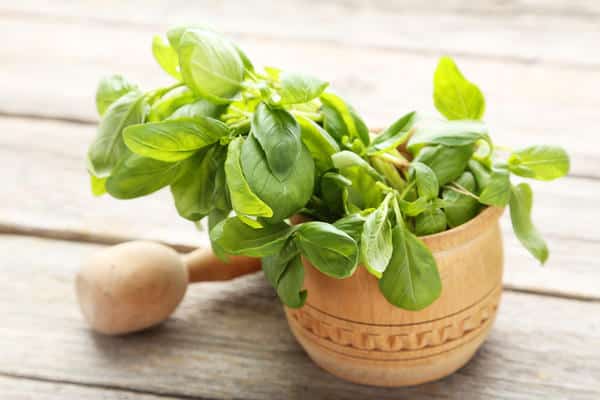
Special products made of polyethylene for freezing presuppose the presence of clamps that simplify the process. When laying out greens in bags for further storage, it is necessary to carefully remove the air inside. This trick will help preserve the grass better and save space in the freezer.
It is not recommended to put a large amount of greens in the bag, in the future it will be difficult to use the blank, since the plant cannot be re-frozen.
For storage in the form of bundles, the greens are wrapped in plastic wrap and rolls are formed, which are placed in the freezer. When using containers, the seasoning is chopped with a knife, laid out in containers, which are sent for storage at sub-zero temperatures.
In order to prepare fresh leaves, use clean washed and sorted basil leaves, water and molds. The advantage of this method is the ability to maximize the preservation of vitamins and useful properties of the plant.
The process looks like this:
- basil leaves are crushed;
- greens are added to a container with water;
- the liquid is mixed and poured into molds;
- containers are placed in a freezer.
The degree of crushing of the leaves can be different, the freezing time depends on the volume of raw materials. On average, seasoned water freezes within an hour. It is required to check the degree of ice formation before removing the containers. Next, the cubes are removed from the molds and stored in plastic bags in the freezer.
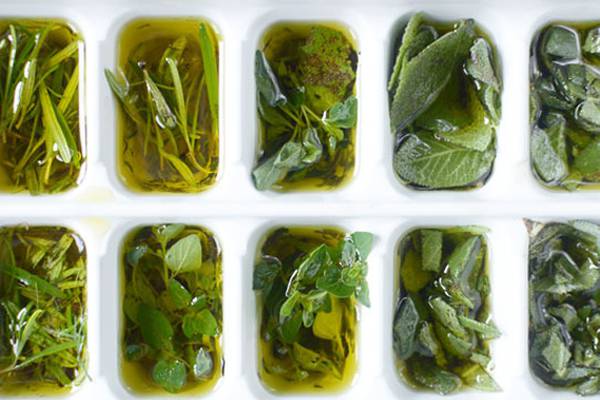
Freeze blanched
One of the most common problems associated with freezing is the loss of color by the leaves of the plant. This can be avoided by using heat. Basil is blanched for 3 seconds, that is, it is treated with boiling water. It is impossible to influence delicate greens for a long time, as such actions will lead to its boiling. Next, the plant is placed on a sheet of parchment and sent to the freezer. After complete freezing, the raw materials are laid out in bags and sent for storage to the refrigerator.
Freezing basil puree
It is convenient to freeze basil in the consistency of mashed potatoes, as this provides concentrated raw materials and the possibility of portioned storage. To do this, the greens are processed, placed in cold water for 10 minutes and thoroughly chopped in a blender.The resulting mixture is placed in ice containers, which are kept in the freezer for a certain time.
With olive oil
The freezing method with olive oil will help preserve the harvest. Such processing of raw materials implies its further use in recipes for the preparation of various sauces, in which oil and basil act as ingredients.
The process looks like this:
- basil is processed, thoroughly washed and sorted;
- grind with a blender;
- add olive oil;
- poured into molds;
- frozen in a refrigerator.
The oil method assumes complete freezing until cubes are formed. They are stored after demoulding in a regular plastic bag in a freezer.
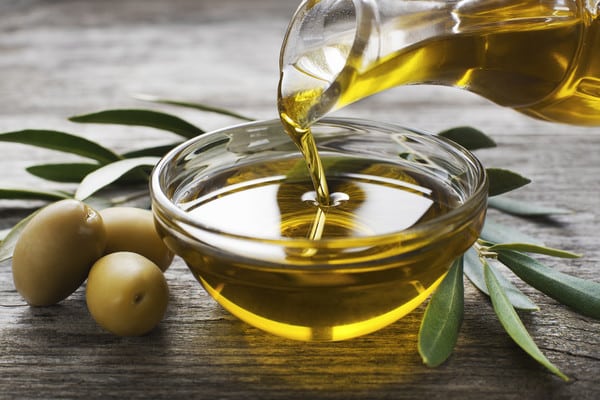
Basil salting
Harvesting by salting does not involve temperature exposure, this allows you to preserve the maximum amount of minerals and nutrients. Only cans and metal lids are sterilized. For cooking take:
- basil - 400 grams;
- salt - 200 grams.
The basil leaves are laid out, successively alternating layers of salt. Store salted greens in a refrigerator, under rolled up lids. Such an ingredient is used in dishes in compliance with the rule - first, salted basil is put and only then, if necessary, salt is added.
Cooking pasta
This recipe allows save basil and makes it possible to use it in soups and main courses. The following proportions are used:
- basil - 400 grams;
- salt - 2 teaspoons;
- olive oil - 100 milliliters.
The processed basil is crushed, mixed with oil and salt. The resulting paste is laid out in containers and stored in the refrigerator.
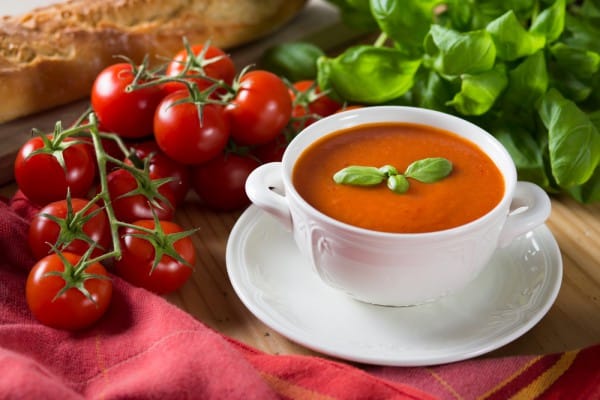
Canning
The method of preserving basil allows you to get a product that can be stored for several months in the refrigerator without losing its qualities. For a simple recipe, use salt, sugar, vinegar, and basil. The secret lies in the fact that the greens are kept in boiling water for 1 minute, then they are ground with a meat grinder and the main ingredients are added to the hot mixture. The jars are sterilized in a standard way and rolled up under the lid.
You can preserve greens using the following recipe:
- salt - 50 grams;
- greens - 50 grams;
- olive oil.
This amount of ingredients is designed for a container of 250 grams. Basil and salt are placed in layers in sterilized jars to the level of the neck and then poured to the brim with olive oil. The jar is closed and stored in the refrigerator.
Basil is often used in tomato preserves. The bottom line is that the fruits punctured with a fork are placed in sterilized jars, laying in layers of basil. Marinade is prepared as follows:
- water - 2 liters;
- salt - 100 grams;
- granulated sugar - 200 grams;
- apple cider vinegar - 100 grams.
Marinade is prepared from the listed ingredients to a boil and poured into jars. Next, the solution is drained, boiled and poured into jars again, after which the containers are rolled up with lids.
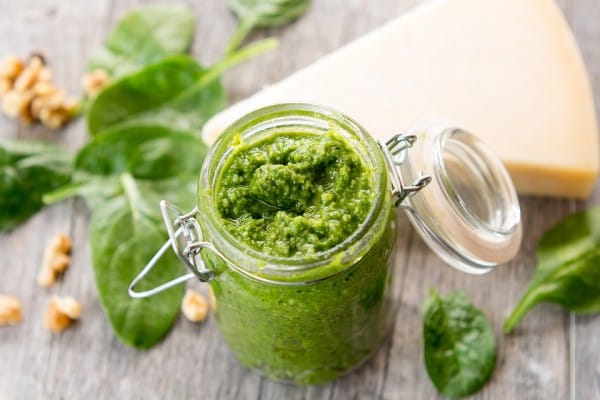
Basil storage rules in winter
Basil should be stored in accordance with the acceptable period, which depends on the type of preparation. The longest shelf life of a frozen product. There are the following rules:
- frozen - up to 2 years;
- dried - up to 1 year;
- canned - up to 1 years;
- salted - from 3 to 4 months.
Basil, properly prepared, can last for at least a year. After opening, the jars are stored in the refrigerator. To avoid spoilage, the product is consumed immediately after opening the container, therefore, when preparing blanks, large containers should not be used. The optimal capacities are considered to be from 250 to 500 grams. In the case of defrosting, the product is not re-frozen, since the taste and appearance are greatly lost.
Dried basil is stored in linen bags in a dark place or in an airtight container.It is recommended not to keep the seasoning together with other herbs, to prevent absorption of extraneous odors. Under proper storage conditions, greens can be stored for more than a year, but over time, the aroma and beneficial qualities of the plant decrease.
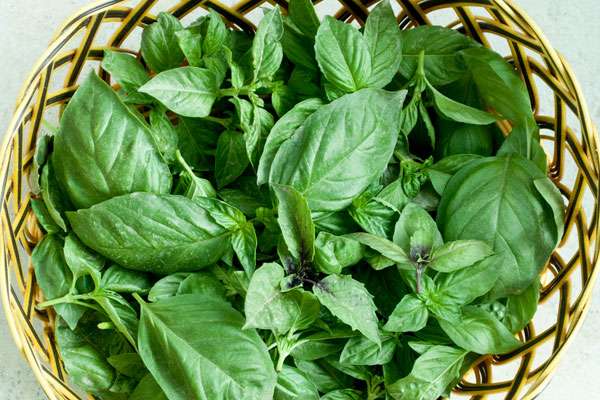
Do not store greens in places with high levels of humidity, as this increases the risk of mold due to water absorption. Periodically, the quality of the product should be checked and the appearance of rot should not be allowed; if there is such a problem, seasoning is not used for culinary purposes.

